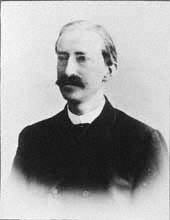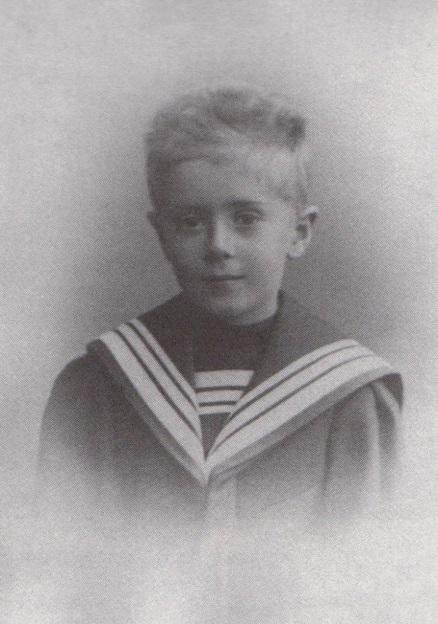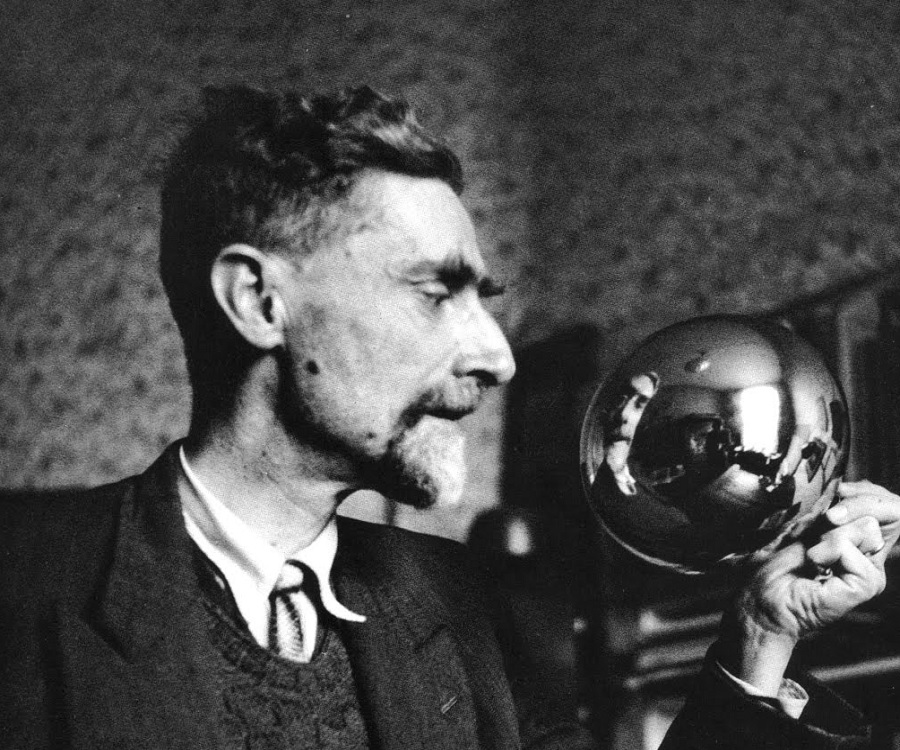Berend George Escher
Berend George Escher ( born April 4, 1885 in Gorinchem, † October 12th 1967 in Arnhem ) was a Dutch geologist and mineralogist.
Life
Berend George was born as the son of civil engineer George Arnold Escher Dutch and his wife Charlotte Marie de Hartitzsch. Escher had received his first education in Leeuwarden and then in Aarau in Switzerland. He then studied at the Swiss Federal Institute of Technology Zurich where Albert Heim his formative teacher. There he received his doctorate in 1911 with the work over the praestiarische folding in the Western Alps with special investigation of carbon on the north side of Todi. For about a year he was an assistant of Eugène Dubois in Amsterdam, where he also served as lecturer in the tectonic geology and petrography. In 1912 he accepted an appointment as curator at the Delft University of Technology, where he worked at the Institute of Mineralogy as a lecturer. From 1913 to 1916 he worked in Heerlen, where he made three trips to Romania to investigate oil fields.
In July 1916, he found a service position in the Batavian Petroleum Company, for which Java, Sumatra, Borneo and Ceram he completed geological research in the Dutch East Indies. On February 25, 1922, he was appointed professor of geology and mineralogy at the University of Leiden. His chair he resigned on October 11, 1922 with an introduction speech Oorzaak s Association of inward geological crashed ( freely translated: cause and context of internal geological forces ) and was connected therewith director of the Rijksmuseum of Geology and Mineralogy in Leiden. Composition of the museum he modernized and gave out some publications. His most important major work is gedaanteveranderingen his 1916 published book De onzer aarde ( freely translated: The Metamorphoses of the Earth), which experienced eleven editions. In the years 1934 and 1948, he revised the original version and brought this book under the title Grond Principles of Geology Algemene ( freely translated: Fundamentals of General Geology ) new out. It represented a textbook for the non-specialist, which was a basic overview of the geology.
In addition, he had developed a special fondness for the study of volcanism. During the occupation of the Second World War, he took part in the Dutch resistance, so that he was taken away by the German occupiers in 1942 in the hostage camp Sint- Michielsgestel. As a result, he resigned his professorship. After the war he was able to resume his teaching in Leiden and took over 1945/46, the rectorate of the Alma Mater on September 4, 1945. In this capacity he participated in the reorganization of the Leiden University and gave Winston Churchill on 10 May 1950 in the Leiden Peter's Church an honorary doctorate of rights. On February 13, 1947 his teaching contract has been extended as a professor of general geology, crystallography and mineralogy. In the same year he was awarded the Knight of the Order of the Dutch lion. As of December 19, 1949, he was confined only to the general geology and became Professor Emeritus on August 20, 1955. He spent his final years in Arnhem Oosterbeek suburb, where he eventually died. His funeral took place on 16 October in silence.
From its closed in Aarau on April 20, 1911 marriage to Emma Brosy (January 27, 1888 in Bern -1976 ) the sons of Rudolf George Escher ( January 8, 1912 Amsterdam March 17, 1980 in De polder ) went and Edmond George Escher ( * 1916 in the Hague) and the two daughters Charlotte Adriana Escher ( * 1914 in the Hague) and Elisabeth Escher ( born July 27, 1918 in Jakarta ) out.
Works
- On the Origin of the reliefs on the so-called " grooved bricks ". 1913
- Preliminary communication on the geology and petrography of San Salvatore in Lugano Peninsula. 1913
- Geology en tunnelbouw. 1914
- De groep Krakatau as vulkaan. 1919
- Vera de Santander Ingen in Krakataugroep na 1908 s wijzigingen in de opvating van eenige geological details. 1908
- L' eruption you Gounoung Galounggoung en Juillet 1918. 1920
- De Kloet van een beschouwd geomorfologisch standpunt. 1919
- Excursie - gids voor Krakatau. 1919
- Atolls archipelago in the Nederlandsch - Oost- Indian. De reefs Besi - eilanden in de groep the Toekang. 1920
- De methodes of graphical voorstelling. 1924
- L' éboulement prehistorique de Tasikmalaja et le volcan Galouggoung ( Java). 1925
- De ontwikkeling van de aardkrost. 1926
- Vesuvius, the Tengger Mountains and the Problem of Calderas. 1927
- Krakatau in 1883 s in 1928. 1928
- Geologic nomenclature. 1929
- On the Formation of Caldera's. 1929
- Gloedwolken s Lahar 's volcanic katastophes in Nederlandsch - Indre. 1931
- Over het Vulkanisme van Java in association met de uitbarsting van den Merapi. 1931
- On the Relation Between the Volcanic Activity in the Netherlands East Indies and the Belt of Negative Gravity Anomalies Discovered by Vening Meinesz. 1933
- On a Classification of Central Eruptions According to gas pressure of the magma and Viscosity of the lava [ and] On the character of the Merapi eruption in Central Java. 1933
- Algemene en Mineralogy Crystallography. 1935, 1950
- De methodes of graphical voorstelling. 1927 1934
- De asymmetric gedaante the aarde s oorzaak hair. 1946
- Lascaux geology as aanrakingspunt van, praehistoire s art. 1952
- Over de mogelijkheid van service baar making van vulkaangssen. undated










